The Boyz in the Hood script is an unflinching portrayal of life in South Central Los Angeles, capturing the complexities of race, poverty, and gang violence. Its characters are flawed but relatable, and its story is both heartbreaking and hopeful.
The film follows the lives of three friends growing up in the Crenshaw neighborhood. Tre Styles is a bright and ambitious teenager trying to escape the cycle of poverty and violence. Ricky Baker is a troubled young man who is drawn into a life of crime.
Doughboy is a hardened gang member who struggles to find a way out.
Boyz n the Hood Overview
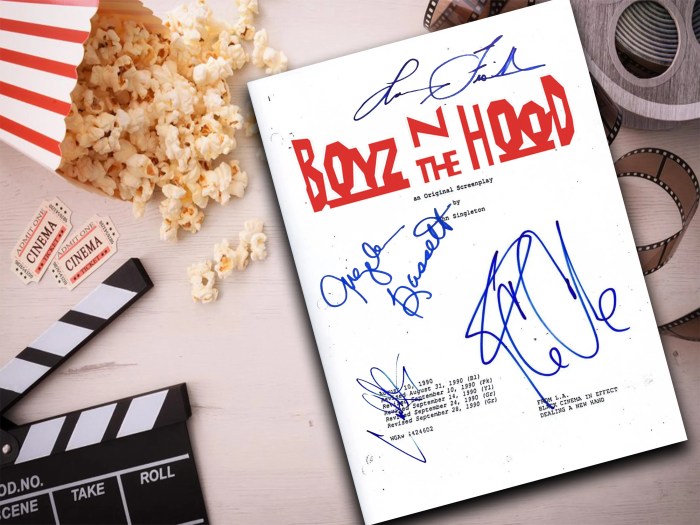
Boyz n the Hood is a 1991 American coming-of-age drama film written and directed by John Singleton. The film follows the lives of three friends growing up in South Central Los Angeles: Tre Styles, Ricky Baker, and Doughboy Reed. The film explores themes of racism, poverty, and violence, and its title refers to the neighborhood where the characters live.
Cultural Impact
Boyz n the Hood was a critical and commercial success, and it is considered one of the most important films of the 1990s. The film was praised for its realistic portrayal of life in South Central Los Angeles, and it helped to bring attention to the problems facing young people in urban America.
Boyz n the Hood also had a significant impact on popular culture, and it is credited with helping to popularize hip-hop music and fashion.
Characters and Relationships: Boyz In The Hood Script
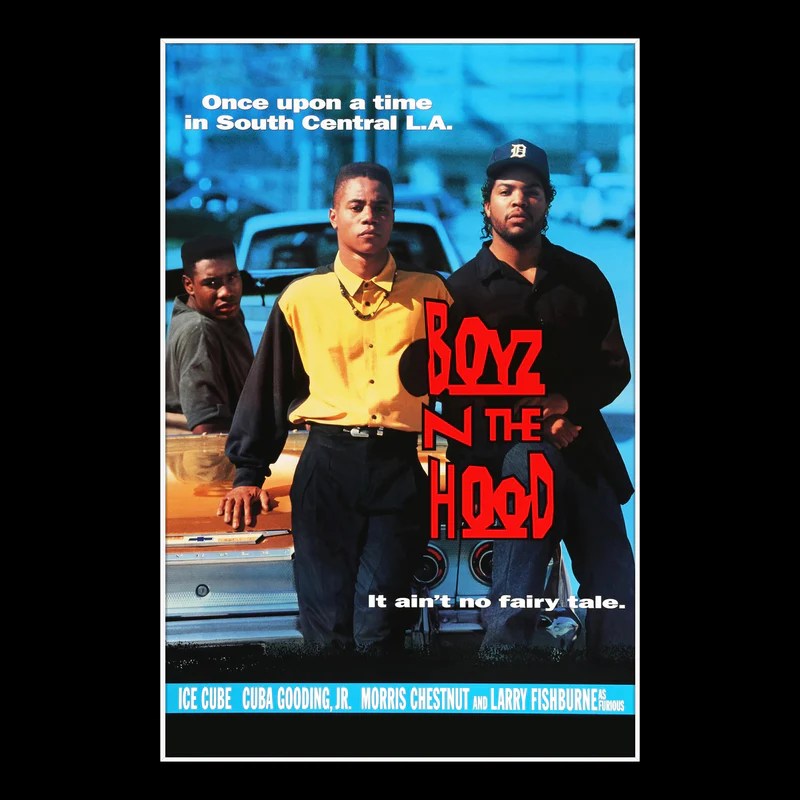
Boyz n the Hooddelves into the lives of a group of young men growing up in South Central Los Angeles, exploring the complexities of their relationships and the challenges they face.
The film’s central protagonist is Tre Styles, a bright and ambitious young man who dreams of escaping the cycle of violence and poverty that surrounds him. His close friend, Doughboy, represents the harsh realities of life in the hood, grappling with the lure of gangs and the consequences of his actions.
Friendship and Loyalty
The bond between Tre and Doughboy is a central theme in the film. Despite their vastly different paths, they remain fiercely loyal to each other, navigating the treacherous streets together. However, their friendship is tested by Doughboy’s involvement in gang violence, forcing Tre to confront the dangers of their environment.
Betrayal
The film also explores the theme of betrayal, particularly through the character of Ricky, a friend who turns against Doughboy after a tragic incident. Ricky’s actions highlight the fragility of trust and the devastating consequences of broken promises in a world where loyalty is paramount.
Fatherhood and Absence
Fatherhood plays a significant role in the lives of the young men in Boyz n the Hood. Tre’s father, Furious Styles, is a strong and influential figure who provides guidance and support. However, Doughboy’s father is absent, leaving him vulnerable to the negative influences of the streets.
Setting and Cinematography
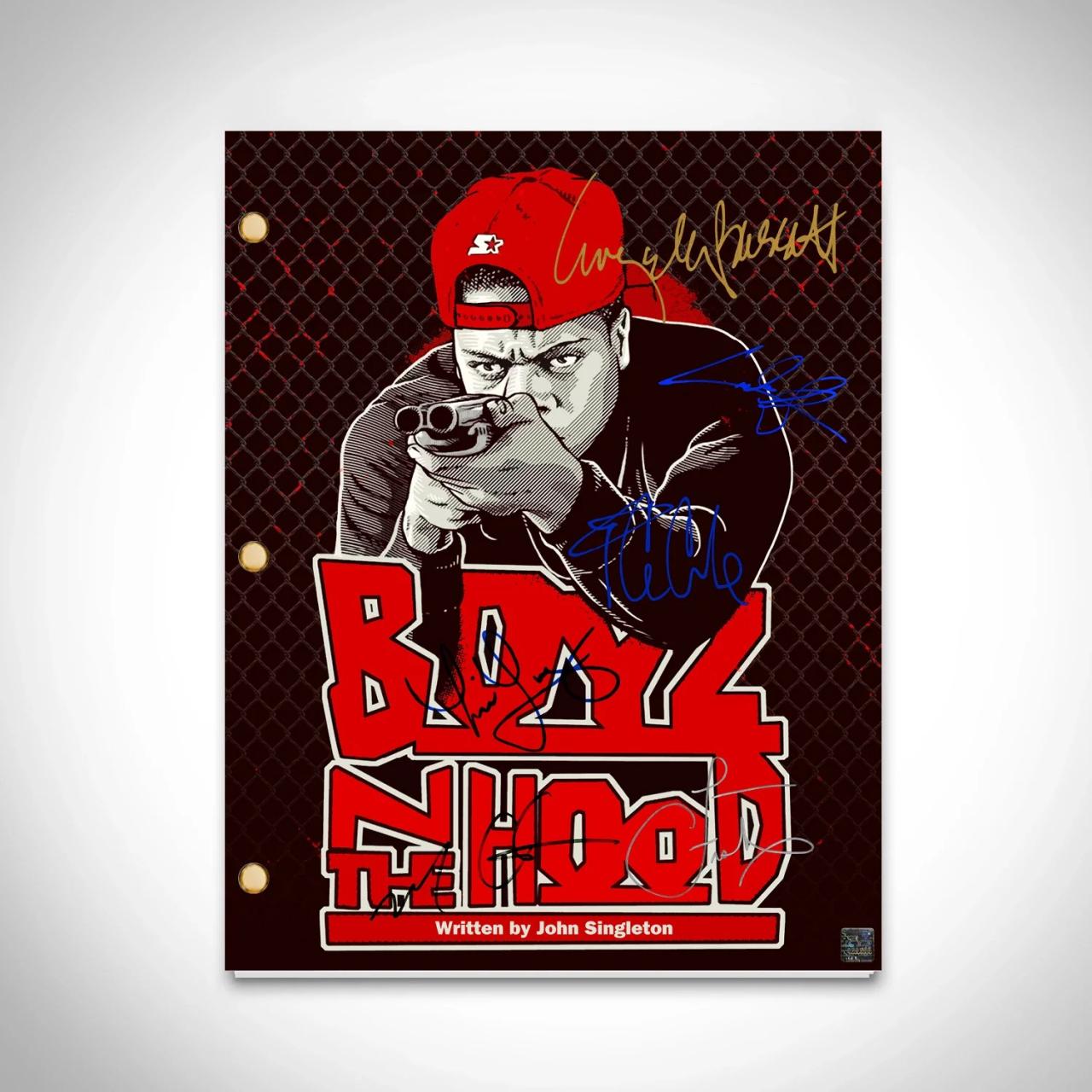
Boyz n the Hoodis set in the Crenshaw neighborhood of Los Angeles, an impoverished and crime-ridden area. The film’s setting plays a crucial role in shaping the story and characters.
The film’s cinematography is characterized by its use of long takes, handheld cameras, and natural lighting. This creates a sense of realism and immediacy, drawing the viewer into the characters’ world.
Camera Angles
The film’s camera angles are often low, placing the viewer in the perspective of the characters. This creates a sense of intimacy and vulnerability, making the viewer feel like they are part of the action.
Lighting
The film’s lighting is often harsh and unforgiving, reflecting the harsh realities of life in Crenshaw. The use of natural light emphasizes the authenticity of the setting and the characters’ struggles.
Color Grading
The film’s color grading is muted and desaturated, creating a sense of gloom and despair. This color palette reflects the characters’ lack of hope and opportunity.
Boyz in the Hood, a powerful and evocative film, has captured the hearts of audiences worldwide. Like verne has 6 math books , the movie explores the complexities of life and the challenges faced by young people in urban communities.
Boyz in the Hood’s compelling story and poignant message continue to resonate with viewers today, reminding us of the importance of understanding and addressing the issues that shape our society.
The film’s visual elements work together to create a powerful and immersive experience. They transport the viewer to the heart of Crenshaw and force them to confront the harsh realities of life in the hood.
Social and Political Commentary
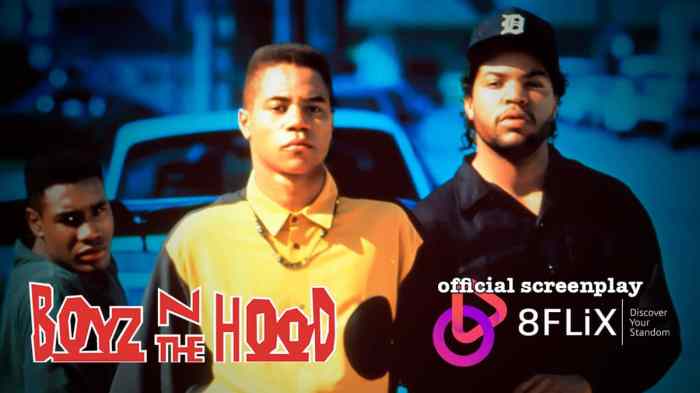
Boyz n the Hoodconfronts a myriad of pressing social and political issues that plagued South Central Los Angeles in the early 1990s, including racism, poverty, and gang violence. The film’s unflinching depiction of these issues serves as a stark critique of their systemic nature and devastating impact on the community.
Racism
- The film exposes the insidious presence of racism in the justice system, as evidenced by the disproportionate arrests and incarceration of young black men.
- It highlights the racial profiling and police brutality faced by black residents, showcasing the systemic bias and discrimination prevalent in law enforcement.
Poverty, Boyz in the hood script
- The film portrays the dire economic conditions in South Central Los Angeles, with high unemployment rates and limited opportunities for residents.
- It emphasizes the lack of affordable housing, proper healthcare, and educational resources, which contribute to the cycle of poverty and despair.
Gang Violence
- Boyz n the Hoodexplores the complex causes and consequences of gang violence, shedding light on the allure of gangs as a source of protection and identity for marginalized youth.
- It critiques the glorification of violence in popular culture and the lack of intervention programs to address the root causes of gang activity.
Soundtrack and Music

The soundtrack of Boyz n the Hoodis an integral part of the film’s storytelling and character development. It features a mix of hip-hop, R&B, and soul music that captures the film’s themes of violence, poverty, and the search for identity.
The film’s use of music is not merely incidental. Music is used to create a sense of place and time, to establish the characters’ emotional states, and to comment on the social and political issues that the film explores.
Use of Music
The film’s soundtrack is a powerful tool for creating emotional impact. The use of hip-hop music, in particular, helps to convey the film’s sense of urgency and authenticity. The lyrics of the songs often reflect the characters’ experiences and struggles, and the music itself provides a powerful backdrop for the film’s dramatic moments.
In addition to its emotional impact, the music in Boyz n the Hoodalso has symbolic significance. The film’s opening scene, for example, features a group of young men playing basketball to the sound of “Straight Outta Compton” by N.W.A. This song, with its lyrics about violence and police brutality, sets the tone for the film and foreshadows the challenges that the characters will face.
Contribution to Hip-Hop Culture
Boyz n the Hoodhad a significant impact on hip-hop culture. The film’s soundtrack helped to popularize West Coast hip-hop and introduced a new generation of artists to a wider audience. The film also helped to break down stereotypes about hip-hop and to show that it could be a powerful tool for social commentary.
The film’s influence can still be seen in contemporary hip-hop culture. Many of the artists who were featured on the Boyz n the Hoodsoundtrack have gone on to become major stars, and the film’s themes of violence, poverty, and identity continue to resonate with young people today.
Critical Reception and Legacy
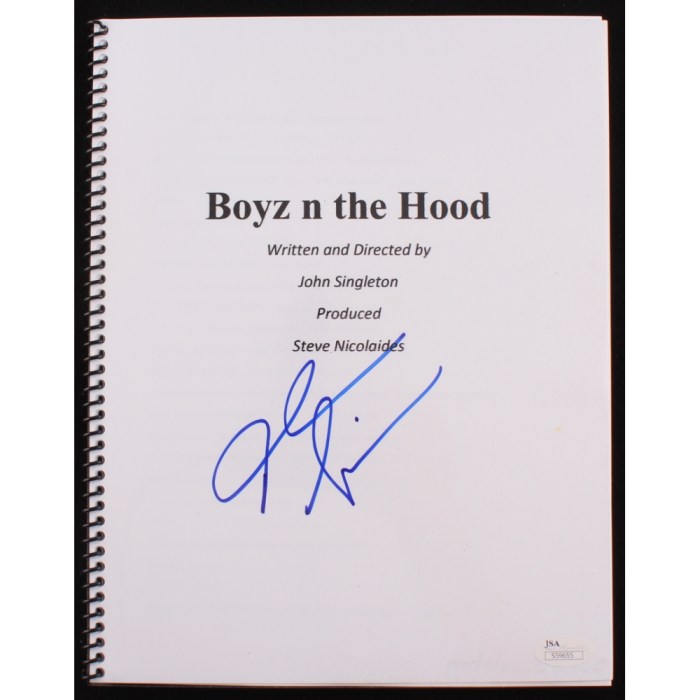
Upon its release, Boyz n the Hoodreceived widespread critical acclaim for its realistic portrayal of urban life, its powerful performances, and its thought-provoking social commentary. The film was nominated for two Academy Awards, including Best Original Screenplay and Best Supporting Actor for Laurence Fishburne.
It also won numerous other awards, including the Golden Globe Award for Best Motion Picture – Drama and the NAACP Image Award for Outstanding Motion Picture.
In the years since its release, Boyz n the Hoodhas continued to be praised by critics and audiences alike. It is widely considered to be one of the most important and influential films of the 1990s, and it has been credited with helping to change the way that Hollywood portrays urban life.
Impact on Cinema
Boyz n the Hoodhad a profound impact on cinema, both in terms of its style and its subject matter. The film’s gritty realism and unflinching depiction of violence helped to break down stereotypes about urban life and paved the way for other films that dealt with similar themes.
Boyz n the Hoodalso helped to launch the careers of several talented actors, including Laurence Fishburne, Cuba Gooding Jr., and Ice Cube.
Enduring Legacy
Boyz n the Hoodcontinues to be relevant to audiences today, as it speaks to the timeless themes of race, class, and violence. The film’s powerful message about the importance of community and education resonates with audiences of all ages and backgrounds. Boyz n the Hoodis a reminder that the problems facing urban communities are complex and that there are no easy solutions.
However, the film also offers a message of hope, as it shows that even in the most difficult circumstances, individuals can make a difference.
Key Questions Answered
What is the main theme of Boyz in the Hood?
The main theme of Boyz in the Hood is the cycle of violence and poverty in urban America.
Who directed Boyz in the Hood?
Boyz in the Hood was directed by John Singleton.
Where is Boyz in the Hood set?
Boyz in the Hood is set in the Crenshaw neighborhood of South Central Los Angeles.